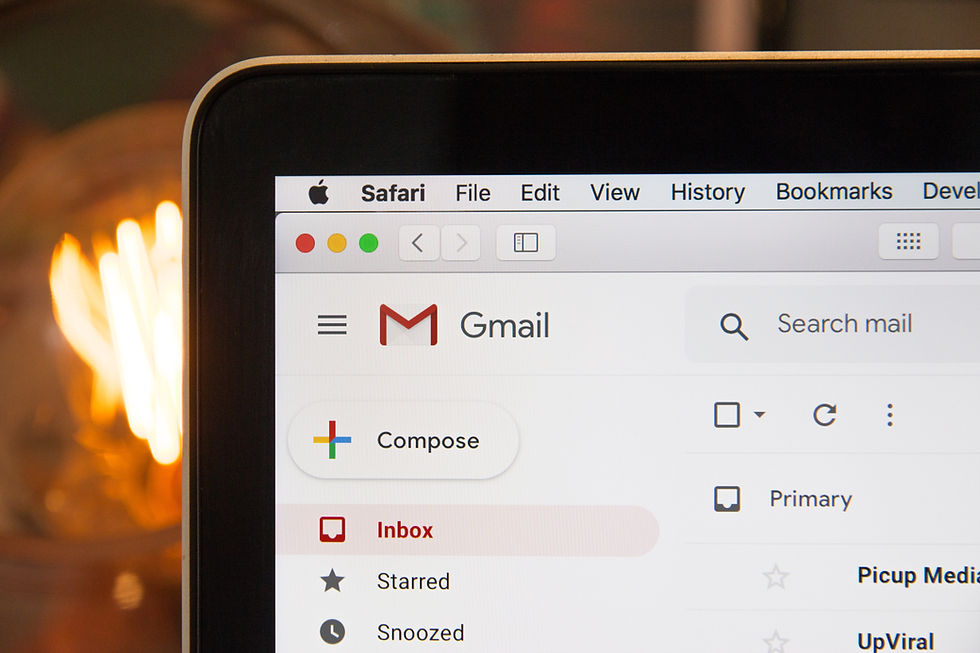The beginner's guide to marketing automation (and how to build a reliable email outreach machine)
- Drew Fabrikant
- Mar 29, 2022
- 3 min read
Updated: Aug 16, 2022
If you’ve ever thought about building a massive sales pipeline that generates predictable revenue - and gets results in less than 7 days - then you’ve come to the right place.

Last week, our webinar provided a step-by-step guide to:
Identifying your top prospects,
Drafting messages that get real replies, and
Automating the whole process.
The first question you probably have is "where do I even start?" And that's a great question, considering all of the options.
Cold calling takes too much time. Direct mail odds are less than 1 in 1,000! FB and Google Ads are great, but you’d better be willing to shell out thousands for advertising and someone to manage it for you.
Is there a better solution out there? Sure is... and it's email automation.

Why? It’s the cheapest, most engaging, you can have campaigns up and running in just a few minutes, and there's no new software to buy - making it the most scalable way to build predictable revenue, by far.
The best part is that once you've invested in setting it up the right way, you can automate the entire thing, so you'll be able to focus on building deeper relationships and closing more deals.
Now let’s go through the webinar highlights.
1. How to find your top 350 prospects
Ok, we may be underselling this part. Because, once you’ve learned this skill, you’ll be able to find an UNLIMITED number of prospects (and you can finally say goodbye to all of your top-of-funnel woes).
Finding prospects starts with defining your prospects.

"Where do they live and how long have they lived there" or "Do they own or rent" (and so many more) are questions that you might use to help you. Most people rely on an Ideal Customer Profile worksheet or checklist to help them think through their definition.
Once you've defined your customer, you'll need to source some data. For example, if you want customers who live on a certain street, you may need to pull tax records, or if your customers have a certain job profile then LinkedIn could be your best bet.
After that, finding contact information can usually be done through companies like WhitePages, or if you're willing to put in the work, some sleuthing on Facebook, Twitter, or LinkedIn can be helpful.
Of course, there are companies out there that automate the entire list building process (like Scout), so that you can save time on research.
Once you've defined your customer, the next part should be easy.
2. How to draft outbound messages that get replies
We’re going to let you in on a little secret. The key to getting replies comes down to just two things… personalization and value.
Think about it the next time someone reaches out to you. You'll probably ask yourself: 1) is this relevant to me, and 2) is it something that I can use?
So, as you craft your first message, make sure that it's HIGHLY personalized and that it's chock-full-of value (e.g. using a first name is a MUST, bonus points for street name or job title, and make sure you leave them thinking that you can do something for them).
Now, it's time to put pen to paper. Keep it soft and simple. Your opening line doesn’t need to be complicated or "salesy," but it does need to let them know what you can do for them. There's a fine line between being thought of as someone who did research and someone who's spamming the town.

It's also important to keep in mind that people are 13x more likely to reply if you don't make them read a novel first! In fact, one of our single best performing emails (over a 50% response rate) is just two lines!
3. How to make it repeatable
So here’s the secret sauce. It comes down to data, how well you've defined your process, and a few useful tech tools.

What you’ll need:
A well-defined customer profile and a great database
A carefully crafted message that leaves room for personalization
A tool to merge all of your data and messages
An email provider that can check for opens and replies and automates follow-up
An analytics tool to measure and test the effectiveness of your messages
Some tech skills to connect all the pieces (if you've gotten to this point and the words API or Zapier scare you, a platform that does it all, like Scout, may be a great solution.)
And if you’re still sitting there scratching your head, just reach out to our team (or sign up for our next webinar!) and we’re happy to walk you through it live, because the results are truly incomparable to any other engagement strategy you’ve used before.



Comments